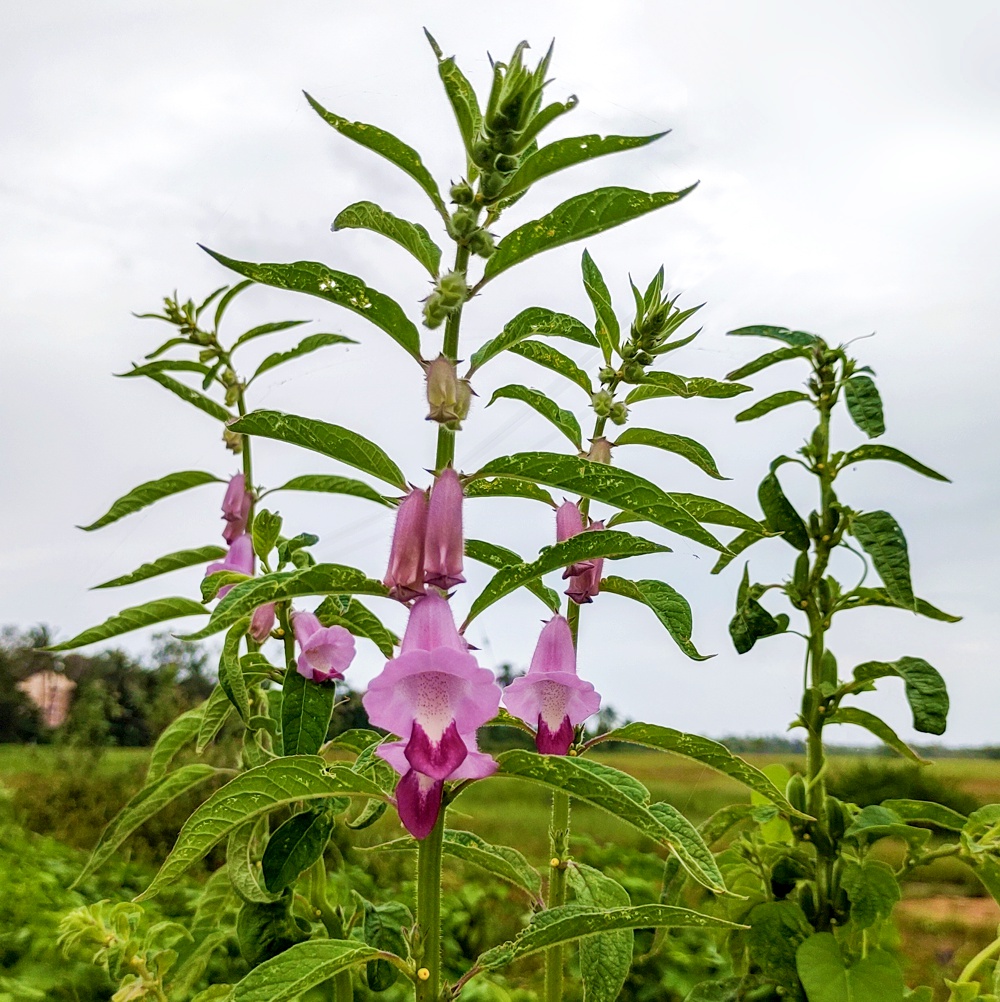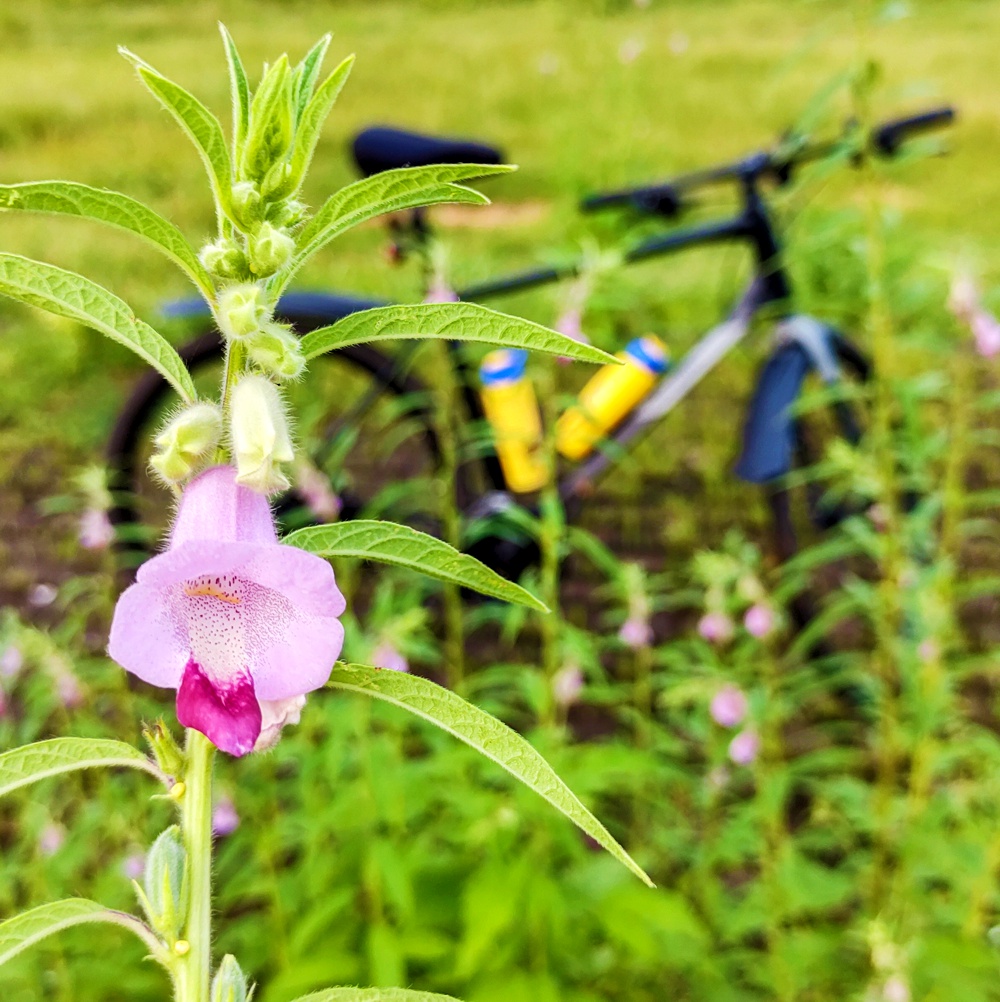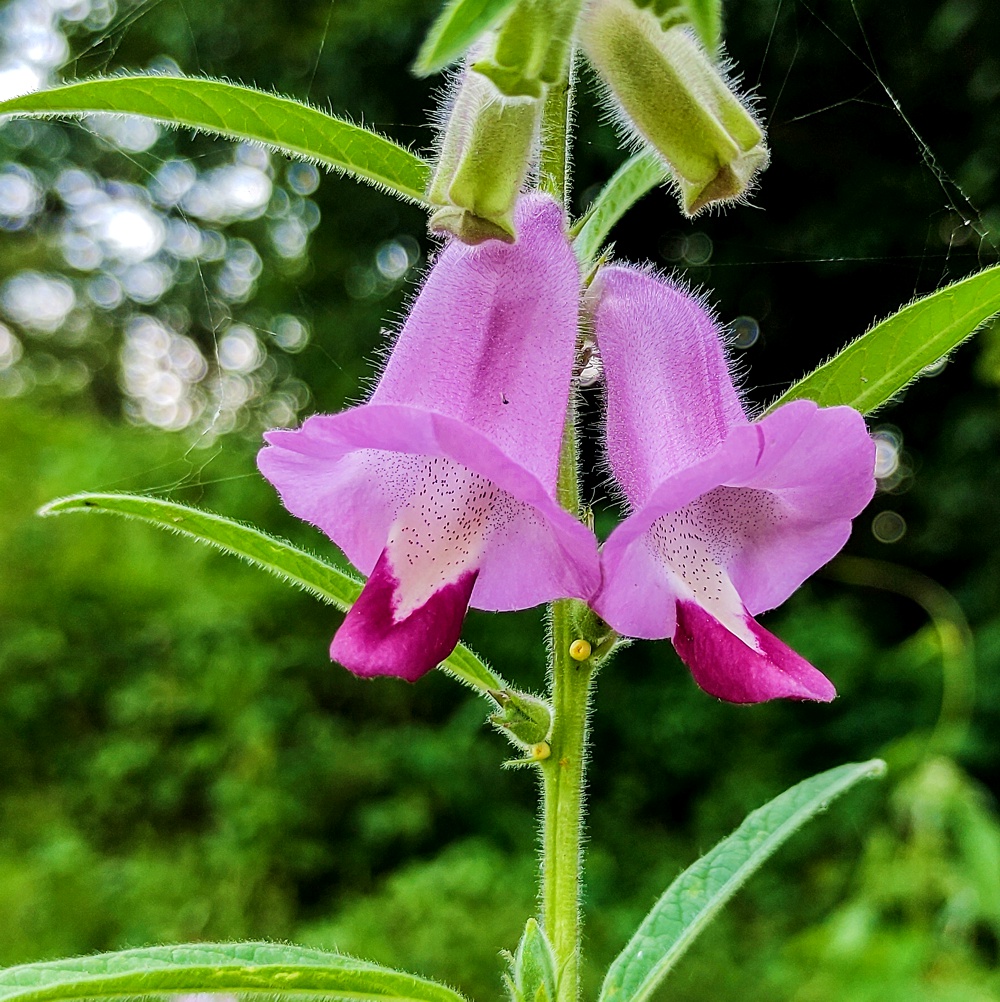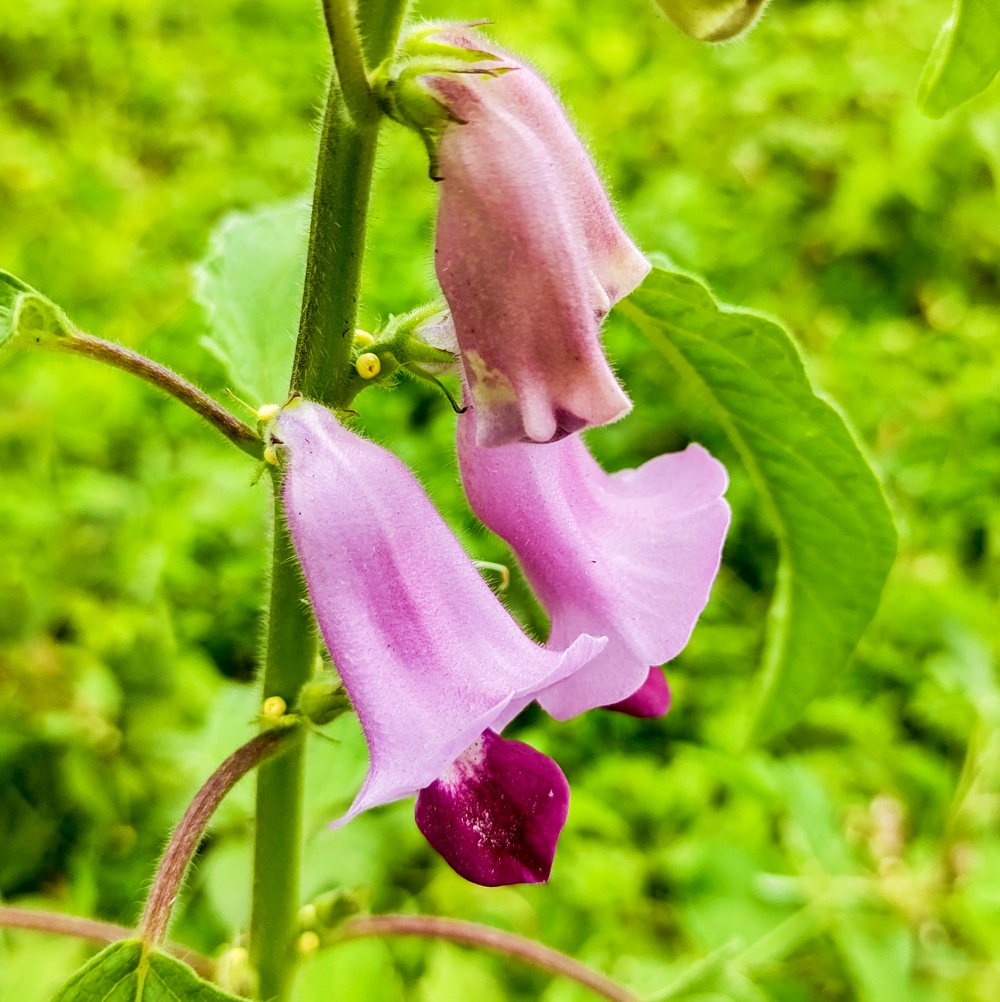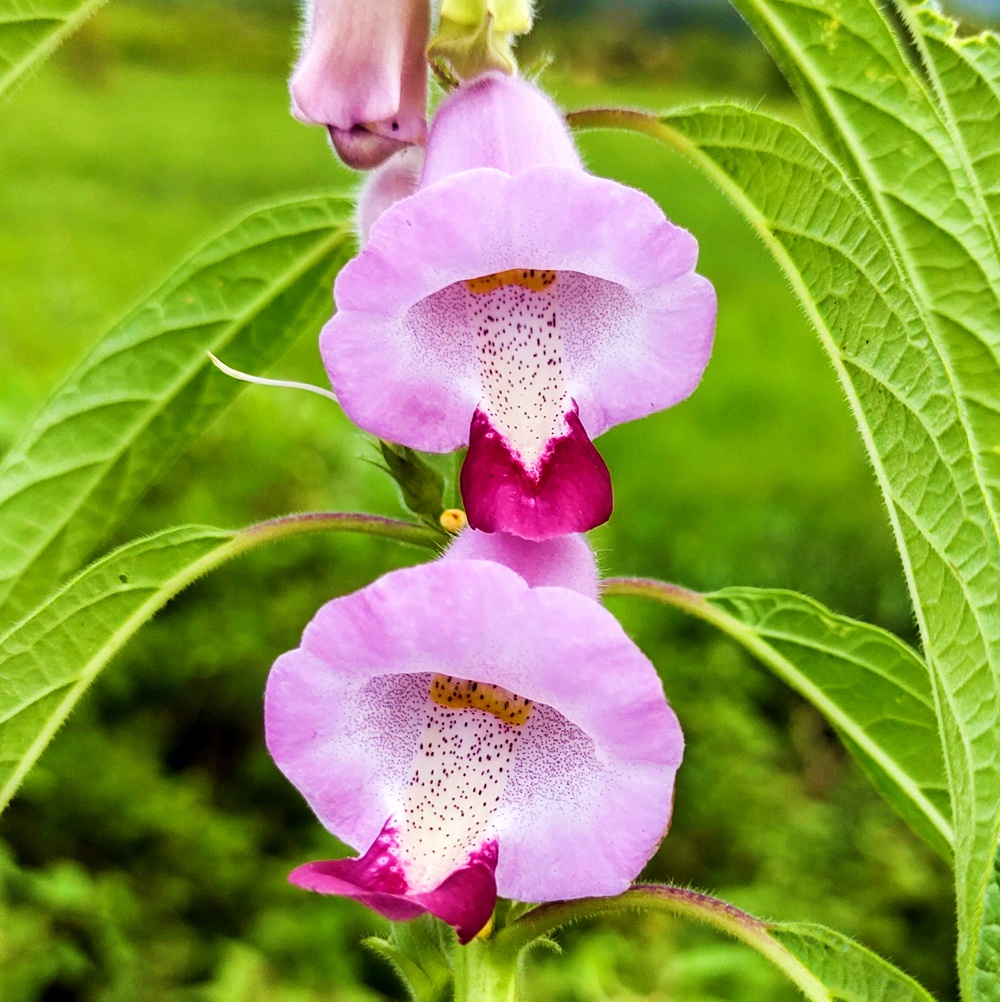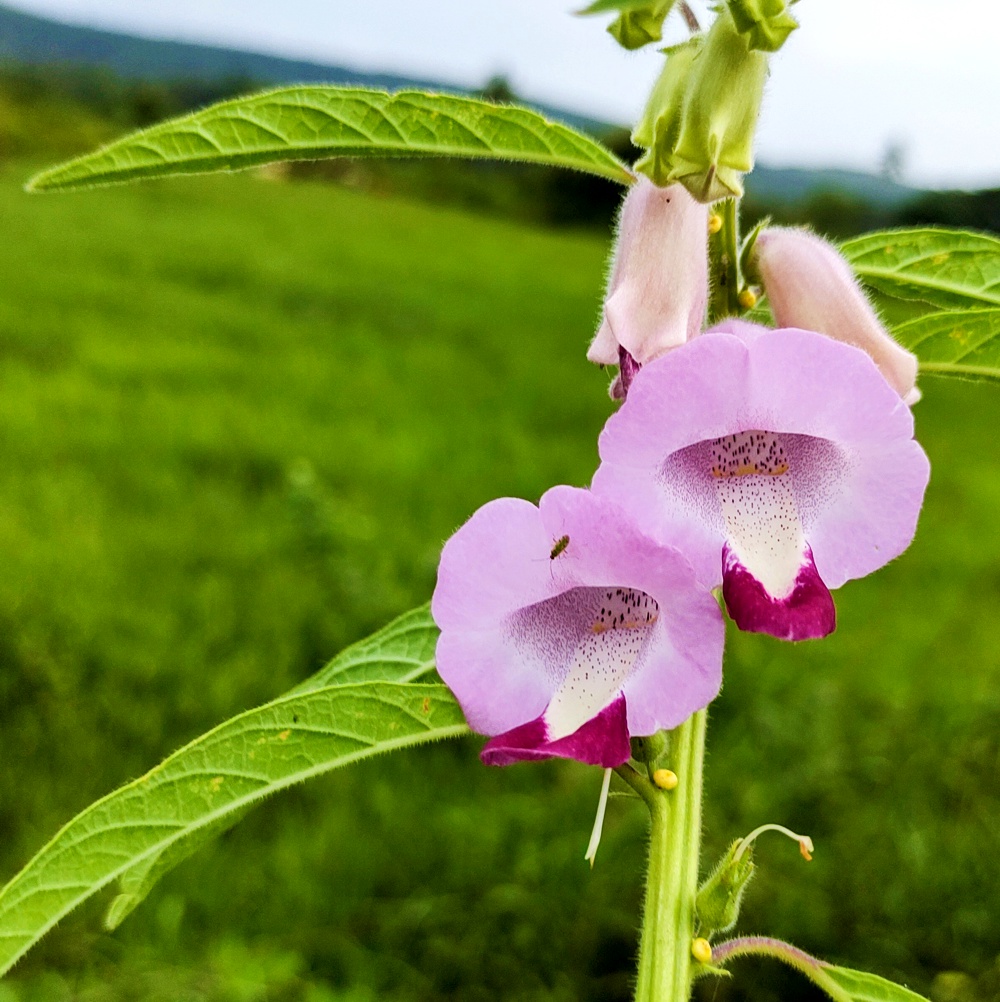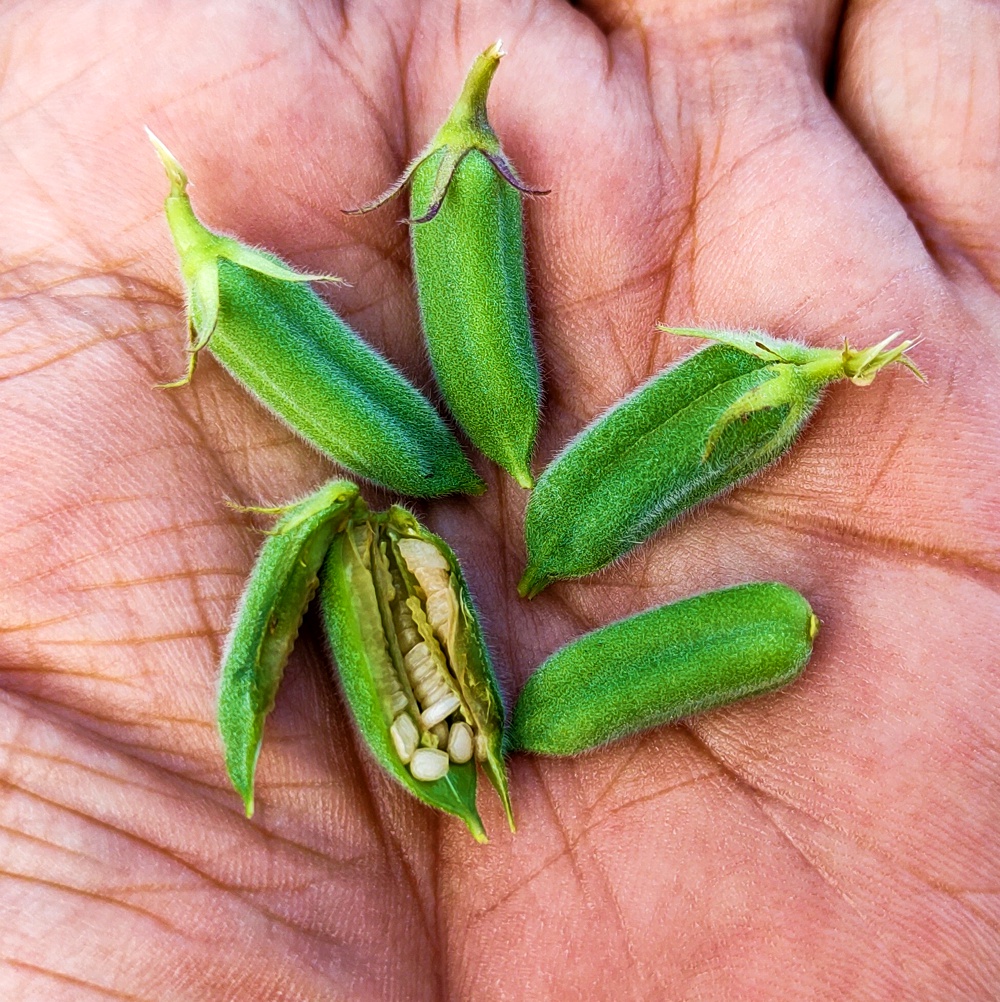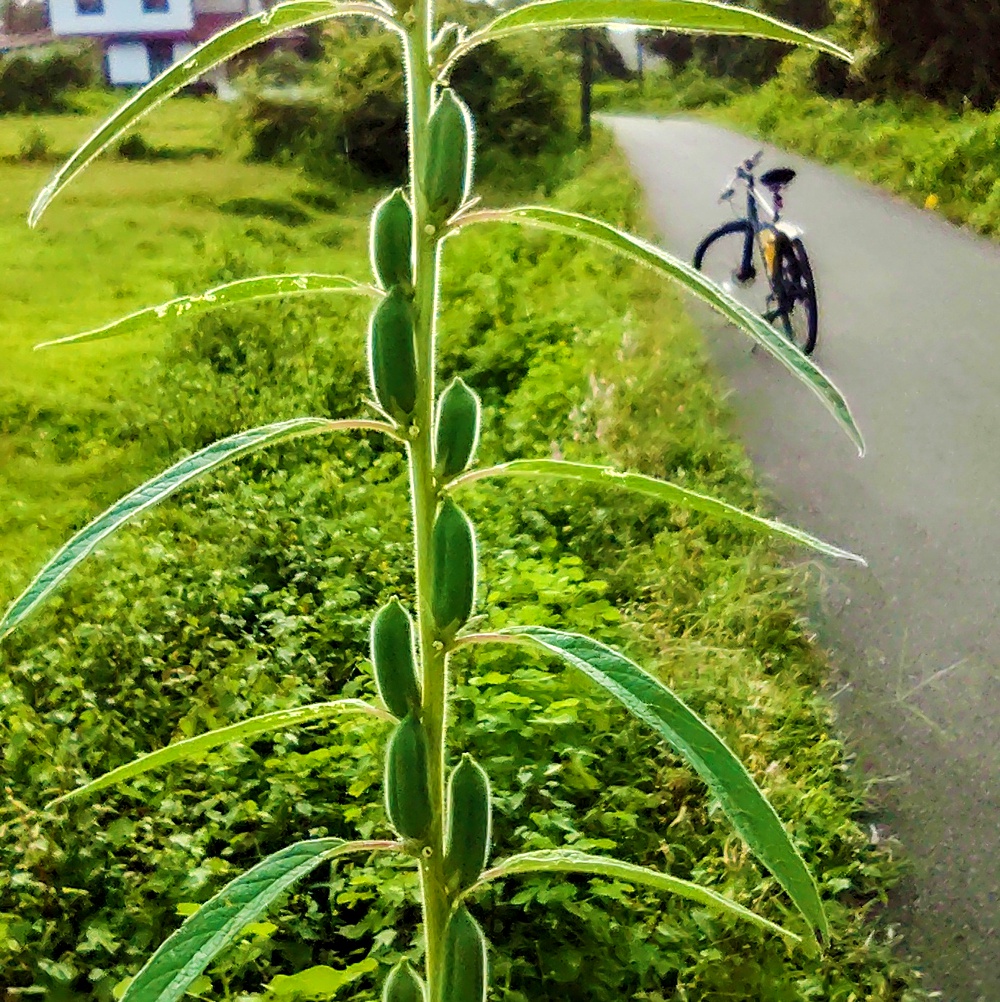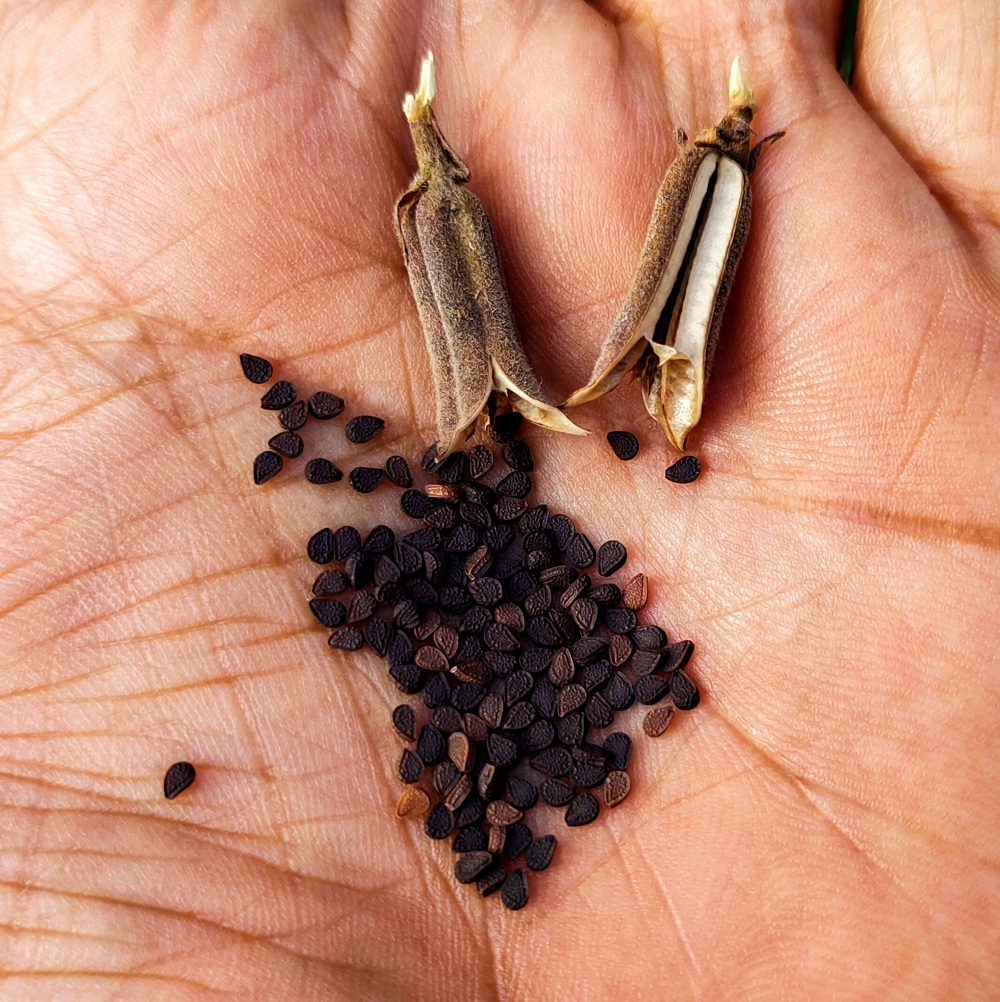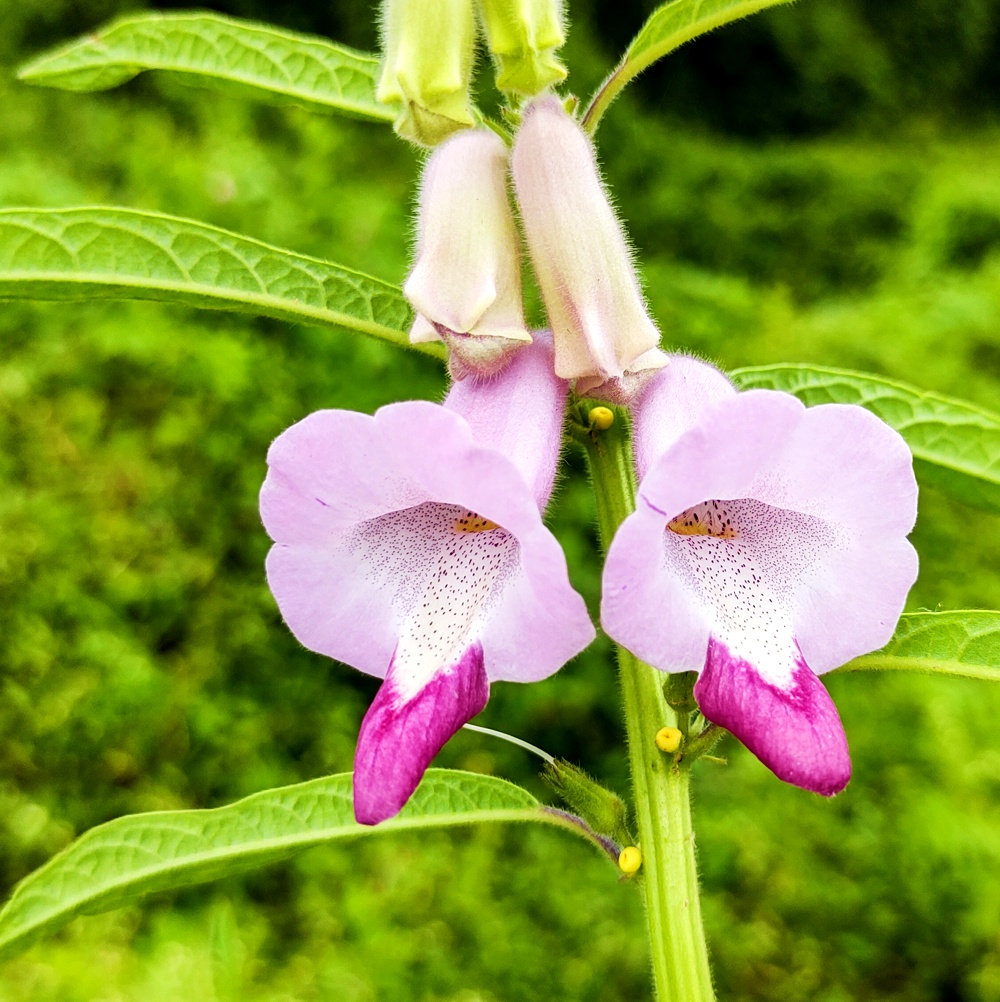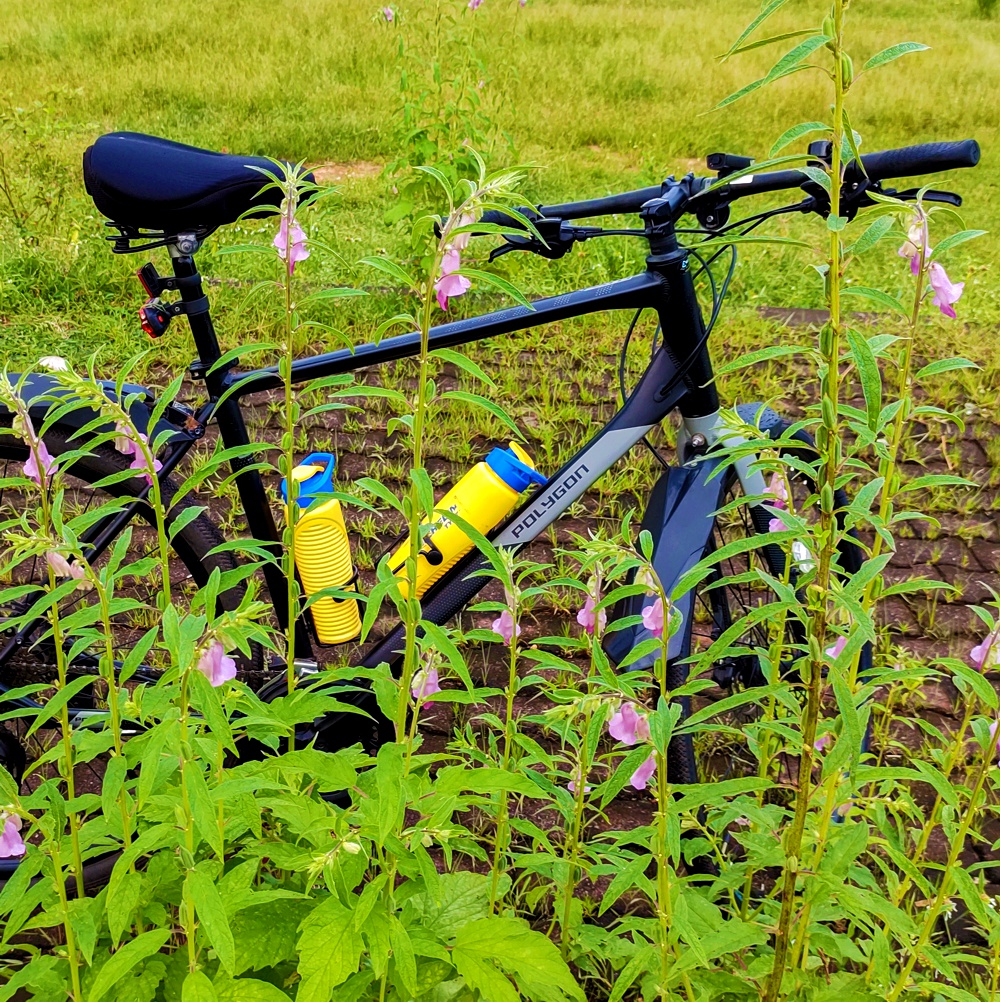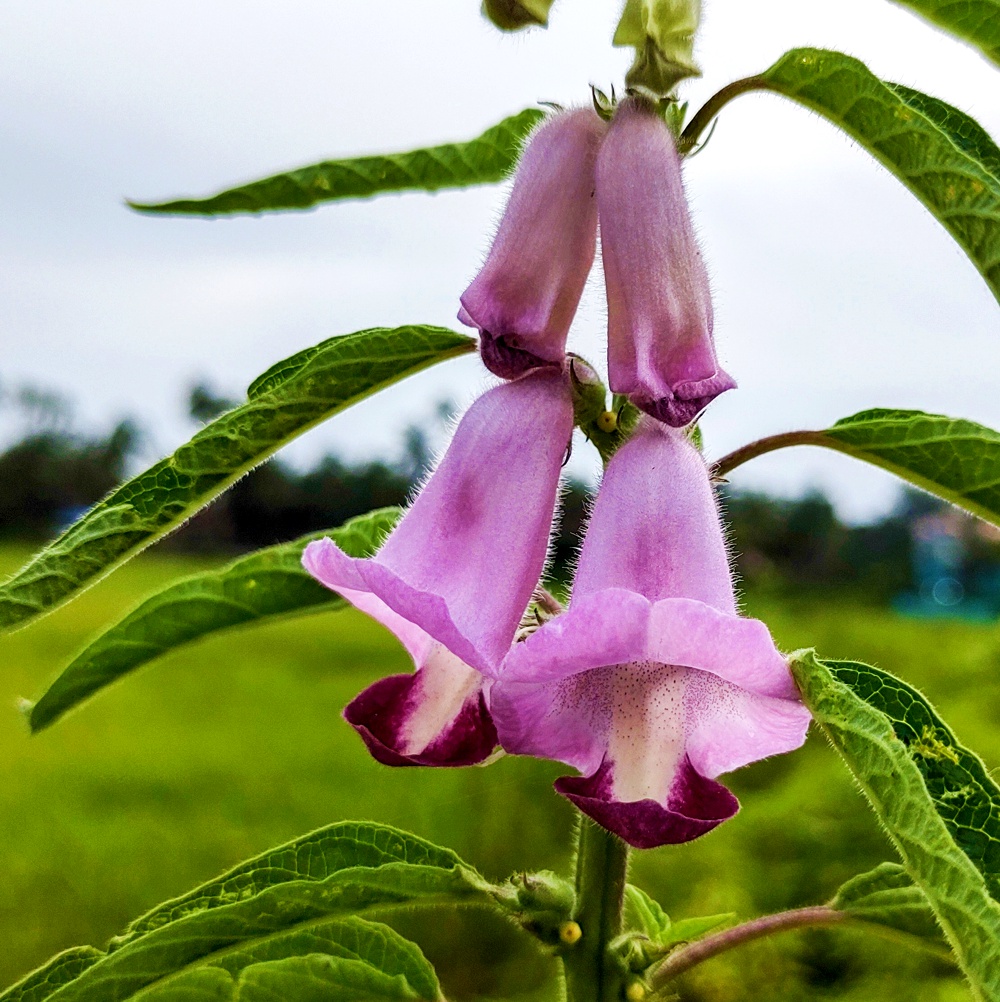The monsoon rains have transformed the countryside into a kaleidoscope of vibrant blooms, and the ones that caught my eye on my bicycle rides are the small bell-shaped pink flowers with their little lip sticking out.
Blossoming profusely along the roadside, the sesame plant – Sesamum orientale, belongs to the Pedaliaceae plant family and is called Ran Til in Konkani. It is also referred to as benniseed, black benniseed, black sesame, and vegetable sesame in English.
For thousands of years, this plant has been grown for medicinal and culinary purposes. Sesame seeds are considered to be the oldest oilseed crops known to humanity and they’re known as the “Queen of Oilseeds” due to their high oil content and resistance to rancidity and oxidation.
Its origin is unknown; GRIN (the Genetic Resources Information Network) suggests a possible origin in India or Africa. Ancient Egyptians are known to have used the seeds as grain flour. For millennia, the Chinese have burned sesame oil to make soot for the finest Chinese ink blocks, while the Romans pounded sesame seeds and cumin, to make a pasty spread for bread.
The flowers are hermaphrodites, with one to three developing in the leaf axils. The flowers may vary in colour. Pink blooms indicate the species Sesamum orientale, which will have dark seeds; white flowers are from the traditional Sesamum indicum and will result in traditional white “hamburger bun” seeds. The tubular flowers of the sesame plant are highly attractive to honeybees and are said to produce some of the highest grade of honey.
The plants are relatively self-fruitful, so when the flowers open, the seeds are already fertilized. The seeds are produced in pods (seed capsules) that appear along the stem. They appear from the bottom upward, are oblong and 1.5 to 5 cm long. Each fruit bears 50 to 100 seeds or more. The seed capsules open when dry, allowing the seeds to scatter.
This plant grows wild and is also a weed in fields and homesteads. It can grow on poor, rocky soil and it flowers even during drought conditions. Depending on conditions, sesame varieties grow from about 0.5 to 2.5 metres (2 to 9 feet) tall; some have branches, others do not.
Sesame seeds, which are used in a variety of culinary products, were once thought to have magical qualities, and it’s possible that the pop, generated when mature sesame pods split could be the source of the phrase in the popular Arabian Nights tale “Ali Baba and the Forty Thieves”, when the impoverished woodcutter Ali Baba opens the door to the thieves cave to find the hidden bags of gold and treasure with the magical command “open sesame”.

